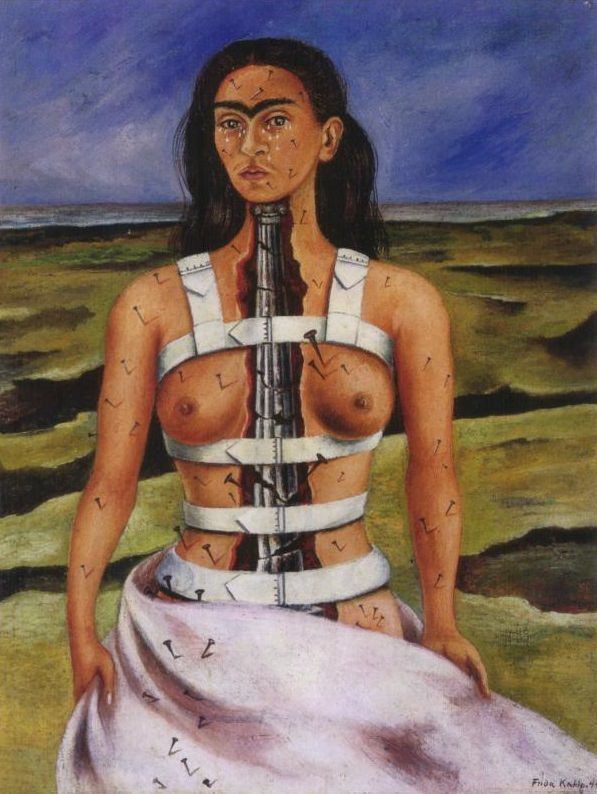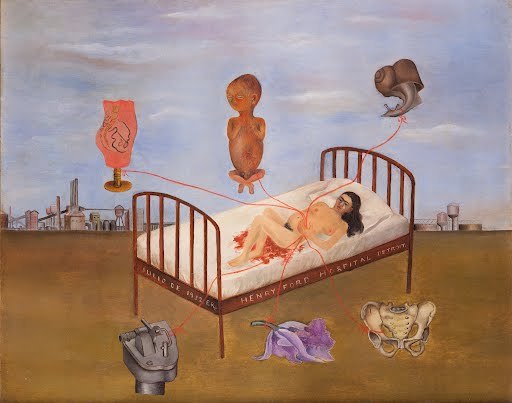Frida Kahlo
Frida Kahlo was widely known for exploring topics related to postcolonialism, class, race, identity, and gender in the Mexican society through her use of a general folk art style. She had a tendency to mix what was real with aspects of fantasy, and she pushed autobiographical elements into many pieces she completed. These pieces more often than not told her story, and embodied the emotions she felt in regards to the occasions she depicted. This produced striking work that is packed with emotion, and which is immediately evident to the viewer. These autobiographical works have been praised by feminists, as she was able to capture the female experience as a whole, along with the emotions of these experiences, that only a woman artist was capable of portraying.
The first piece I chose from Kahlo is The Broken Column. Many of her works often embodied pain and suffering, and this piece continues that theme. Through the depiction of her broken body after her involvement in a serious traffic accident, Kahlo presents the viewer with insight as to how she was affected both physically and emotionally. Her spine has been replaced with a crumbling column, drawing attention to the spinal injury she suffered, as well as to how the accident drastically altered her whole life with the on-going problems she faced as a result. Nails riddle her body, and she is shown wearing a corset, which relates to her history with polio, as well as the restrictions she dealt with in her life by simply existing as a woman. Tears stream from her eyes, yet her face is passive and emotionless, which can be read as a representation of the idea that women must always be perfectly poised in any situation. Also, unlike many of her other self-portraits, Kahlo is the only subject, and is not accompanied by any animals or other people. This solitary presence, as well as the cracked background she is portrayed on, serves as a symbol to her isolation. Through all of these aspects combined, Kahlo more than captures the emotions that embodied her experiences of the accident, both immediate and on-going.
Another extremely emotionally charged piece Kahlo created is Henry Ford Hospital, in which she addresses her miscarriage, and her general inability to have children. She captures the trauma of the experience in the way her naked body is twisted, as well as the bloody sheets she lies on. She is connected to various objects related to her time in the hospital by red ribbons, symbolic of umbilical cords. These objects include a fetus, which represents her want for a child, as well as a snail, standing for the slowness of the operation she underwent. By depicting a complication of pregnancy, Kahlo is breaking the boundaries that many artists have set. Women were expected to paint subjects such as flowers and children, things that were positive, connected to nature, and were generally regarded as pretty. While a miscarriage is connected to nature, it is neither positive nor pretty. In this way, Kahlo went against the social standards placed on women artists, and was able to depict a horrible time in her life that transferred emotion directly to the viewer.

